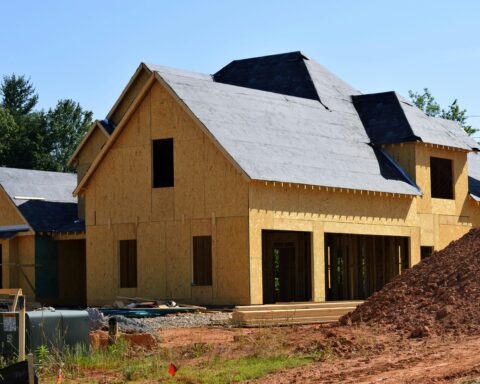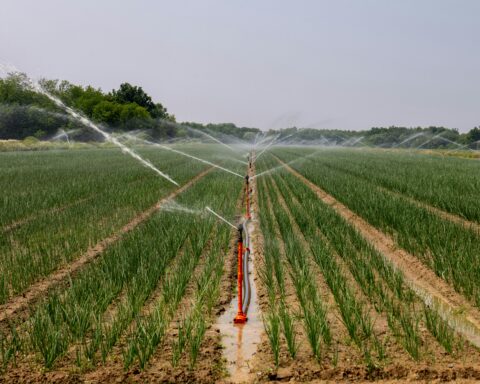The Appalachian Basin has long been known for having some of the cheapest natural gas in the United States. But as the country seeks to reduce methane emissions and other pollutants, natural gas could become the feedstock for creating cleaner energy.
Hydrogen is the most abundant element on earth and can be produced with zero to near-zero emissions. The abundance of natural gas in Appalachia is what Shawn Bennett, the energy and resilience division manager at Battelle Memorial Institute, hopes will give his region a leg up on securing funding from the U.S. Department of Energy (DOE) to create a hydrogen hub.
“This is kind of that new phase of, ‘How can Appalachia really be the first on something that’s new, interesting and has the potential to really kind of change up the economy in ways we haven’t seen in a number of years?’” Bennett said.
The DOE announced last year it is investing $7 billion to boost the country’s hydrogen production and create a network of seven regional clean hydrogen hubs (H2Hubs). Spread across the U.S., each hub would create hydrogen from available resources in the region to store and use locally. The goal is to help lower emissions from the industrial sector, which produces 30% of the nation’s carbon emissions, but also to expand its use in other industries, such as transportation and power supply.
“Hydrogen is a vital part of a comprehensive portfolio of tools to achieve net zero emissions by 2050,” said Kelly Cummins, acting director for the Office of Clean Energy Demonstrations (OCED) at the DOE, in an Oct. 16 presentation.
The U.S. can use the H2Hubs to rapidly scale its infrastructure to produce and use more hydrogen, Cummins said. Once operational, the H2Hubs are projected to produce 3 million of the 10 million metric tons of clean hydrogen needed to achieve the zero-emissions goals and to drive the cost of hydrogen to $1 per kilogram, down from the current price of $5 per kilogram.
Additionally, the federal investment is expected to capture $40 billion in private-sector funds, Cummins said.
At the Pacific Northwest Hydrogen (PNWH2) Hub, a collaboration to move forward on hydrogen and other renewable energy has been ongoing among public and private entities, including Washington State University, the Consortium for Hydrogen and Renewably Generated E-Fuels (CHARGE) and the Joint Center for Deployment and Research in Earth Abundant Materials (JCDREAM).
This innovation ecosystem in the Pacific Northwest is what inspired the organizations to apply for an H2Hub, said Aaron Feaver, executive director of CHARGE and JCDREAM. Another reason was the region’s existing clean power grid, comprising numerous local grids.
“Many of those are already operating above 90% carbon-free – some of them even 98 or 99% carbon-free,” he said. “That is really unique in the country, if not the world, to see power grids that already have such a low carbon footprint. So it’s a great opportunity to purchase an electrolyzer and create a facility and plug it into the power grid and be from Day One already operating with a very low carbon footprint for that clean hydrogen.”
The partner organizations involved with PNWH2 Hub also plan to collaborate with the H2Hub in California to create the West Coast Freight Network to deploy hydrogen fueling stations along major West Coast highways, such as Interstate 5, I-82, I-84 and I-90, Feaver said. This includes looking at forecasted demand to make sure equipment is available for trucks, buses and other vehicles that would be fueling up along the “hydrogen highway.”
“Pulling all of that together from scratch is something that we need this entire community to organize around it, and so that’s something that will probably be collaborating with California on quite a bit,” he said.
Creating clean energy
In the energy sector, hydrogen is often referred to as the “Swiss Army knife of energy,” said Bennett, with the proposed Appalachian hub. This is because of its ability to be used in a variety of industries, such as creating steel and ammonia or as fuel cells for heavy-duty trucking. Fuel cell vehicles operate by hydrogen gas stored in the trunk and only emit steam.
“The Hubs really came together as kind of this idea of ‘How do we jumpstart the economy, how do we create that springboard, and how do you really create an economy that people can touch, feel and see?’” Bennett said. “So then it makes it more of a commonplace in the United States. The passage of the Bipartisan Infrastructure Law really put the United States at the forefront of the hydrogen economy.”
Battelle is a philanthropic trust headquartered in Columbus, Ohio, that has been around since 1929. The nonprofit has worked on large, complex projects, including operating some of the DOE’s national laboratories.
Battelle applied to lead the Appalachian Regional Clean Hydrogen Hub (ARCH2) and is now in negotiations with OCED on the final contract before funding can be awarded. The negotiations process is expected to take several months, and full build-out could take 10 to 12 years, Bennett said.
Each H2Hub would develop projects for the production, storage and consumption of hydrogen. Bennett said ARCH2 would have 13 projects across Ohio, Pennsylvania and West Virginia, which is the Appalachian region for the hub.
Although Battelle’s proposal would seek to mainly create hydrogen from natural gas, Bennett said it could also create hydrogen through other methods, such as electrolysis, or using water and energy, and also anaerobic digestion by decomposing food waste. The created hydrogen will be used regionally, such as in fuel cells for electric mining and other heavy-duty vehicles.
“It will start making people feel more comfortable, like the banks and lenders, from the economic perspective of showing there is a business-use case here, it is able to be done [and] it is able to be cleaner,” he said.
In the Pacific Northwest, the PNWH2 Hub found using an electrolyzer, which essentially splits water into hydrogen and oxygen, is the most effective way the hub can create hydrogen, Feaver said. The three states that will benefit from the PNWH2 Hub – Idaho, Oregon and Washington – will benefit from using hydrogen in the trucking industry, data centers, the power grid, maritime shipping and aerospace uses.
“There’s a lot of parts of the economy where [electrifying energy is] simply not compatible,” Feaver said. “Probably among the most obvious examples is the aerospace sector. … That’s a good example of where hydrogen or sustainable fuels that are derived from hydrogen would be the most viable option that we can use right now.”
Creating community
As the H2Hubs work with OCED on their final proposals for the DOE funding, the community benefits plan (CBP) is a key component. These plans explain how the H2Hubs will engage with their region’s labor force and communities with a goal of advancing diversity and equity. These plans will tie into President Joe Biden’s Justice40 initiative that aims to have 40% of all federal investment benefit disadvantaged communities.
The majority of the H2Hubs will be located in disadvantaged communities, said Shalanda Baker, the DOE’s director of the Office of Economic Impact and Diversity.
“We are at the beginning of a transformative moment in our clean energy future and hopefully a bright one,” she said at the Oct. 16 presentation. “This is also a moment to be transformative in so many ways, not only with respect to energy, but as you all know the success of our clean energy transition requires community.”
Battelle plans to host site selection meetings with the communities where it is proposing to locate the projects, Bennett said. It also will create an advisory board with representatives from all three states.
Public comment will also be incorporated throughout the various stages, which will include the federal National Environmental Protection Act process to determine any impacts to the environment. ARCH2 is still early in the negotiation process but will be methodical with planning, Bennett said.
“Historically, this region of the U.S. has helped [during] a lot of world wars and supplied the nation with a lot of the steel that really made this country prosperous,” he said.
The PNWH2 Hub also plans to be intentional with meeting with the region’s residents and organizations in disadvantaged communities and Tribes to make sure mistakes of the past are not repeated, Feaver said. Often these communities had airports and freeways built nearby and they bore the brunt of pollution and related health issues, he said.
“[We’re] really trying to make sure we do that outreach, and we educate and make sure that communities are heard,” he said. “There are certain risks associated with hydrogen. We want to make sure people get a chance to ask those questions and understand that very well.”
Get to know the H2Hubs
The seven H2Hubs will use different energy sources for creating hydrogen for various consumption. OCED Director of Project Management Todd Shrader provided a breakdown of each H2Hub on Oct. 16.
Appalachian Regional Clean Hydrogen Hub (ARCH2): $925 million
With its access to low-cost natural gas, ARCH2 would help reduce emissions and pollution that have long affected Ohio, Pennsylvania and West Virginia. Proposed uses for hydrogen in the region include fuel cells in electric mining and heavy-duty vehicles and heavy industry manufacturing.
Alliance for Renewable Clean Hydrogen Energy Systems (ARCHES): $1.2 billion
Located in California, ARCHES would produce hydrogen from renewable energy and biomass energy, which uses organic material. Consumption would focus on decarbonizing public transportation, heavy-duty trucking and port operations. ARCHES would also create the West Coast Freight Network that links to the Pacific Northwest Hydrogen Hub.
Gulf Coast Hydrogen Hub (HyVelocity H2Hub): $1.2 billion
The Houston-area H2Hub would use both natural gas with carbon capture and electrolysis using renewable energy to create hydrogen. This would help drive down the costs of production, distribution and storage. The H2Hub will use hydrogen for fuel-cell electric trucks, stationary power fuel cells, ammonia refineries, petrochemicals, and marine fuel.
Heartland Hydrogen Hub (HH2H): $925 million
Located throughout Minnesota, North Dakota and South Dakota, the HH2H would use regional energy sources to remove carbon from the production of fertilizer and use hydrogen for power generation at existing utility-owned companies.
Mid-Atlantic Hydrogen Hub (MACH2): $750 million
This H2Hub in Delaware, New Jersey and Pennsylvania will primarily produce hydrogen through electrolysis and thermal conversion, which uses heat to convert carbon-based sources into hydrogen. MACH2 would repurpose existing oil infrastructure and pipeline rights of way to develop renewable hydrogen production facilities. Consumption options include upgrading bus mechanic depots, power generation and building fuel stations.
Midwest Alliance for Clean Hydrogen (MachH2): $1 billion
Located in a key U.S. industrial and transportation corridor in Illinois, Indiana and Michigan, the H2Hub will produce hydrogen through renewable natural gas and low-cost nuclear energy available in the area. End uses will include carbon-free industrial steel and glass production, power generation, refining, heavy-duty transportation and sustainable aviation fuel.
Pacific Northwest Hydrogen Hub (PNWH2): $1 billion
The H2Hub in Montana, Oregon and Washington will use renewable resources to produce hydrogen exclusively by electrolysis. End uses could include heavy-duty transportation, agriculture, data centers, refineries, seaports and aviation.
All news and information on this site is provided by the team at Strategic Partnerships, Inc. Check out this short 1-minute video that provides a quick overview of how we work with clients.













